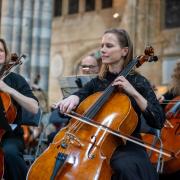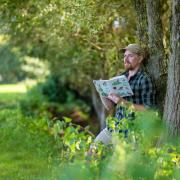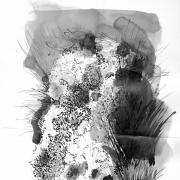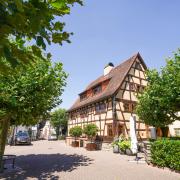With increasing urbanisation, our gardens are becoming ever-more important habitats for birds, providing them with food, water, shelter and nesting opportunities. Clare Simm says this time of year is brilliant for watching the birds in your garden as they settle down for the breeding season

Spring garden birds
Most birds will currently be busy thinking about the breeding season, though some may have already started. Crow species, for example, can start nesting as early as February, and others, including thrush species, may start in March.
You may be lucky enough to have birds nesting in your garden, especially if you have a thick hedge or a nest box. For some species, such as House Sparrow, gardens are vital nesting habitats with the majority of individuals using them. Less obvious species can also rely on gardens to nest in, with one study finding that about a third of Greenfinches will utilise garden trees and hedges.
Spring is not just about our resident breeders, however. It is also the time of year that our eyes turn expectantly to the skies. Migrants, including Swallows and House Martins, should be returning to their UK breeding grounds throughout April. The South West is a stronghold for Swallows, though House Martins are sadly declining in the area, as they are in much of the country.

What to look out for this summer
If you’re lucky, you may get birds bringing their young into the garden to feed. Goldfinches start to increase in gardens in May, peaking in June, with parents bringing their young to feeders. The chance of seeing them in Devon gardens is on par with that of the rest of the UK, with an average of 57% of British Trust for Ornithology (BTO) Garden BirdWatch gardens reporting them in 2014. Juvenile Goldfinches can be distinguished from the adults by their lack of the black, red and white facial markings.
Another finch prevalent in Devon gardens in the summer is Bullfinch, with just over a quarter of Garden BirdWatch gardens reporting them between May and August. Like Goldfinches, they bring their young to birdfeeders favouring mixed seed or sunflower hearts. They peak from early June and then rapidly move out of gardens, all but disappearing by October. Juvenile Bullfinches are similar to females with a brown underside, but lack the black cap of an adult.

A classic summer visitor is Great Spotted Woodpecker, and a third of Devon Garden BirdWatch gardens reported them in summer 2014. Families tend to visit peanut feeders between May and July, as parents show their young where to find food. Juveniles have similar body plumage to the adults but the contrasting feature is a full bright red cap on the head. Females have a fully black cap and males only have red on the nape of their necks.
Winners and losers in Devon
In the South West, gardens are much more likely to be frequented by certain bird species than in the rest of the country. One such bird is Blackcap - traditionally a summer visitor to the UK, it was rarely seen in gardens - but over recent decades there has been an increasing wintering population. These birds show a preference for the food on offer in gardens in the South West and West of England, potentially due to milder winters. In Devon, an average of 12% of Garden BirdWatch gardens reported winter Blackcaps in the last ten years, twice the percentage seen across the UK.
Sadly, Devon is also seeing its share of declining birds. Starlings have been declining dramatically across the UK since the early 1980s, most likely due to young birds failing to survive their first winter. The decline has been worst in the South and West of Britain, and Garden BirdWatch data reflects that. In 2014, an average of 24% of Garden BirdWatch gardens reported Starlings, compared to 46% across the UK. Greenfinch, which have been declining since 2005 due to a disease known as trichomonosis, seem to be doing slightly better in the South West, however. While they have declined dramatically, they were still reported from 51% of Devon gardens, compared to 48% across the UK in 2014.



























